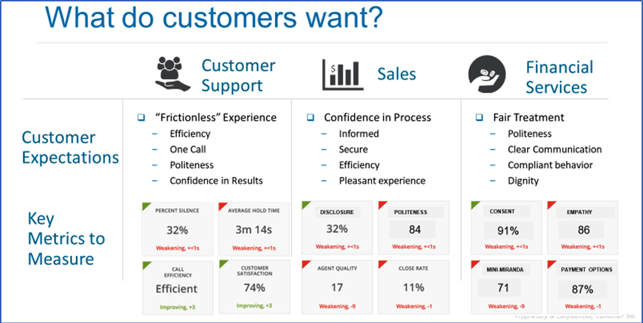Before technology grabbed hold of the customer experience, the path to purchase was typically linear. Customers entered the funnel and followed through to the end goal, the point of sale. But, now that consumers have countless ways to connect with prospective companies, leaders must guarantee that every touchpoint greets both current and potential customers with one consistent brand message. Customer journey mapping now stands as the essential tool for understanding consumer behavior in modern contexts.
While customer journey mapping was once reserved for simply pinpointing customer experience issues, companies are now putting this strategy at the heart of the development process. Many prior strategies failed to put the customer at the center of the planning process, but doing so at the onset promises to boost engagement and retention. However, not all brands have reached this stage at the present moment.
The CMO Council’s “Making Personalization Possible” report emphasizes that, while marketers recognize that comprehensive customer journey mapping (44 percent) represents the future for successful, long-term customer relationships, deep understanding of each individual customer doesn’t come easy. While the majority of marketers—86 percent—are unable to personalize experiences across the entire customer journey, many can now better tie such engagements to business impact by focusing on improving retention (69 percent) and acquisition (62 percent) rates. However, only 29 percent of marketers agree that an omnichannel approach to customer engagement holds the key to long-term relationships, despite the fact that this holistic method has become the backbone for effective journey mapping.
For those grappling with the intricacies of customer journey mapping, companies must ask four crucial questions as they develop their analytical strategy:
- Which channels do our customers prefer?
- How does customer sentiment compare at these various touchpoints?
- What inspires customers to choose one channel over another?
- How are we interacting with customers on each channel?
Successful journey mapping requires equal parts internal and external analysis, as assessing this level of incoming data will be rendered null and void if the brand itself doesn’t have the correct processes in place behind the scenes. Determining customer pain points might offer guidance, but said information serves little purpose if companies don’t have the appropriate protocols for response established. Leaders must also realize that issues need to be identified and rectified in real time. Everything’s instantaneous now, and customers pursue relationships with companies that demonstrate competency and concern at every stage of their overall journey.
For each moment of truth, brands must be ready, willing, and able to service customers. Sure, it seems daunting to position customer service representatives at every available touchpoint, but there’s no longer one or two points of entry where the customer journey begins. Instead, today’s journey seems more like a maze—there may be more than one starting point, but only one path leads to the desired destination. Leaders must ensure that consumers don’t hit any roadblocks along the way.
Brands must also establish one unified brand message to stand guard at each possible moment of truth. Like people, companies have one opportunity to make their best first impression. If one or more channels fail to maintain this level of consistency, brands risk losing business from any prospect that enters the pipeline at said touchpoints. Analyzing the interactions that take place at each touchpoint will better equip team members to handle future engagements, as they’ll be familiar with potential problems and prepared to take the next-best action in cases where issues arise. Operations cannot possibly run smoothly 24/7, so it’s proactive and practical to teach all employees how to manage these contact channels in the case of crisis or dissatisfaction.
Of course, there’s no one-size-fits-all approach to customer journey mapping or its subsequent back-end adjustments and improvements. However, its underlying value remains undisputed. If brands wish to truly embody the concept of customer-centric DNA—the pinnacle of modern CX for today’s leading companies—leaders must tailor their technique to correspond with the wants and needs of their customers. Journey mapping, though often belated, presents brands with the opportunity to gain deeper insight into every aspect of the overarching customer experience.
Customer experience management ultimately serves as the cornerstone for successful journey mapping endeavors. Without an efficient, long-term CEM strategy, it’s almost impossible to put customer data to good use. Technology has only inflated the volume of Big Data insights, so it’s up to every given company to determine their current CEM maturity level in context with today’s evolving behaviors. Employee involvement, however, can give less advanced brands the upper hand in this highly competitive environment.
Internal branding now stands as one of the greatest differentiators across all industries. Outward relationships depend upon an internal culture that not only puts the consumer first, but also puts employees n the driver’s seat. By establishing an internal culture that highlights each employee’s impact on the customer experience, customer centricity isn’t just learned—it’s lived throughout the entire organization. Internal branding brings the desire for unified messaging to the frontlines, as employees recognize that they hold the power to make or break customer relationships.
Thus, customer journey mapping provides insight into consumer behaviors, which influences the way employees uphold brand promise, which in turn, circles back to the customer experience. Everything’s intertwined, but it’s ultimately the company’s responsibility to manage and maintain CX. Customer centricity will always be the key ingredient for satisfying, long-term relationships, but it’s up to each brand whether to serve it up hot or cold.
About the Authors
Dennis Gershowitz is founder and principal of DG Associates, a consulting firm that specializes in driving service revenues and profits through the development and implementation of customer experience management (CEM) strategy and service operations improvements. Contact Dennis at dennisg@dgassociates.net
Bill Moore is VP of CRMI. He designs and delivers CEM best practices workshops, as well as CEMPRO employee loyalty, training and retention programs, that result in the increasing customer satisfaction, employee retention, and profitability for CRMI clients.







 About the Author:
About the Author: